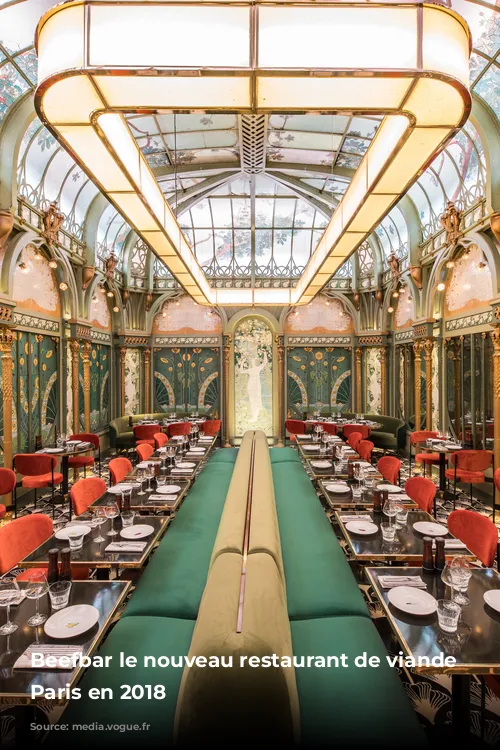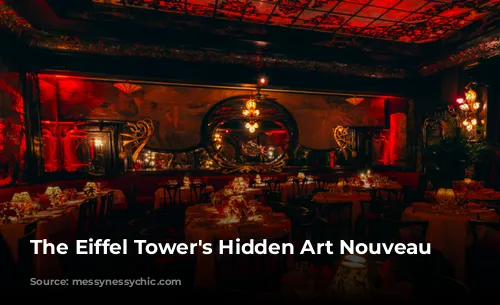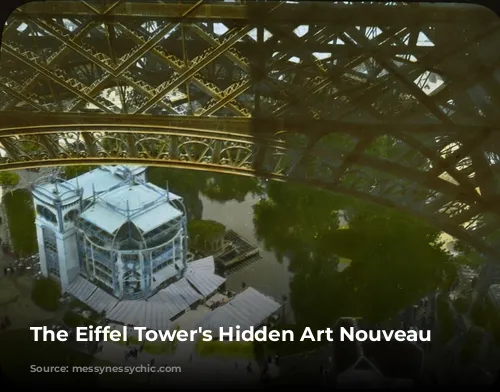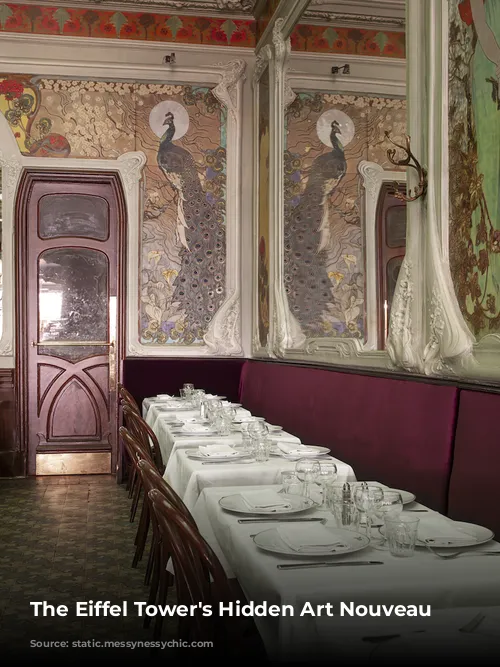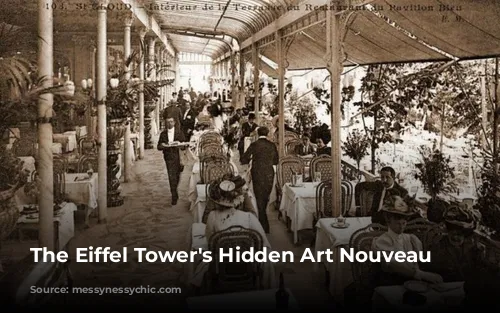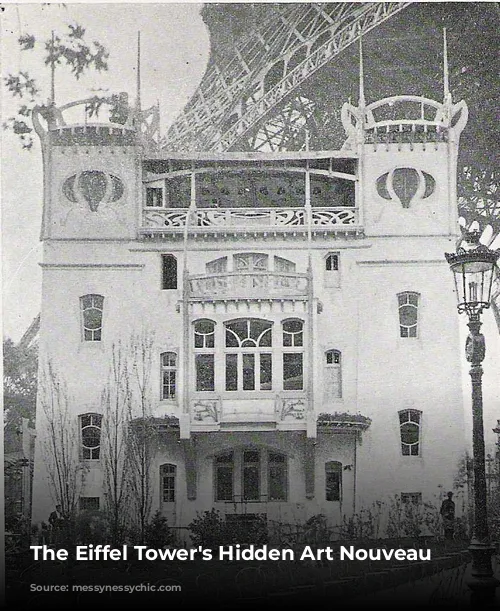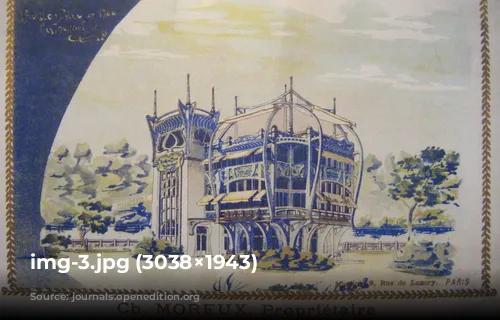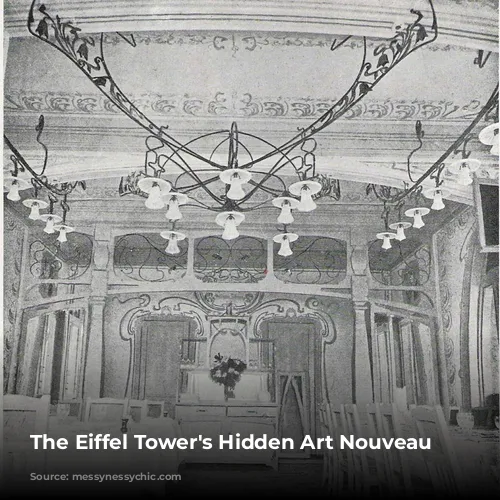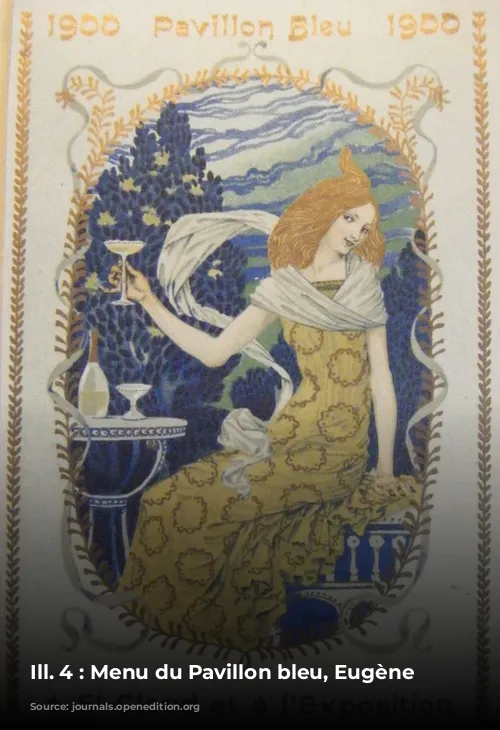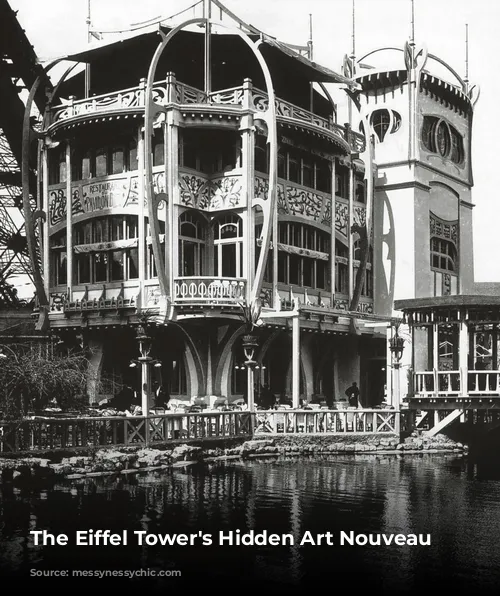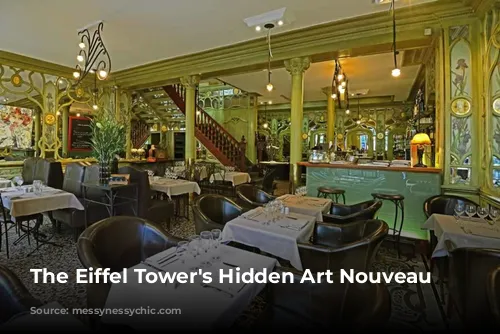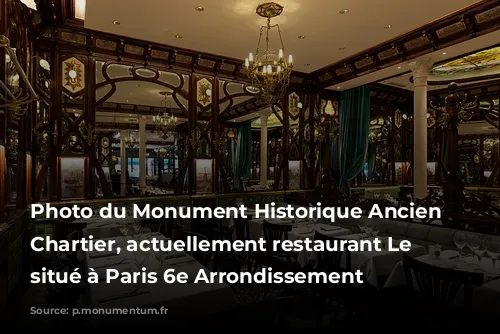Imagine dining under the Eiffel Tower in Paris, but not as we know it today. Picture a world where the iconic landmark is adorned with Art Nouveau, a dazzling artistic movement that swept through Europe at the turn of the 20th century. This is the story of Le Pavillon Bleu, a lost restaurant nestled at the foot of the Eiffel Tower that was a true embodiment of Art Nouveau elegance.
(This section introduces the topic and sets the stage for the story of Le Pavillon Bleu, highlighting its unique location and the artistic movement it embodied.)
Le Pavillon Bleu was born during the 1900 Universal Exposition in Paris, a grand celebration of innovation and art. The restaurant was a collaboration between the French architect René Dulong and the Belgian architect and furniture designer Gustave Serrurier-Bovy, a key figure in the Art Nouveau movement. With its grand facade, intricate ornamentation, and a vibrant blue and yellow color palette, Le Pavillon Bleu was a feast for the eyes, captivating visitors with its stunning Art Nouveau design.
(This section delves into the origins of Le Pavillon Bleu, highlighting its creators, the context of its creation, and its remarkable design.)
This temporary palace, a testament to the Belle Epoque, was a “pop-up” restaurant designed to entice visitors to the original Le Pavillon Bleu in Saint-Cloud. The architects created a stunning structure under the arches of the Eiffel Tower, using wood as the primary material and incorporating fanciful arches, ornamented balconies, and a decorative tile frieze. An artificial lake, reflecting the restaurant’s vibrant colors, added to the enchanting ambiance, transforming the structure into a floating Art Nouveau masterpiece.
(This section elaborates on the unique features of Le Pavillon Bleu, emphasizing its temporary nature and the architectural details that contributed to its beauty.)
Though Le Pavillon Bleu was an instant success, capturing the hearts of many Parisians with its modern aesthetic, its fate was sealed with the end of the Exposition. The restaurant, built for temporary use, was dismantled and recycled, leaving behind only one surviving photograph of its magnificent interior. This serves as a reminder of the ephemeral nature of many World’s Fair structures, which were often built with wood and staff, destined to be demolished after the event.
(This section focuses on the reception and ultimate fate of Le Pavillon Bleu, highlighting the fleeting nature of temporary structures and the limited documentation that remains.)
Though Le Pavillon Bleu is a lost gem, its legacy lives on through the Art Nouveau restaurants that still grace the streets of Paris. These historical gems, each with its own fascinating backstory, offer a glimpse into the past and allow visitors to experience the charm and elegance of the Belle Epoque.
(This section transitions to introducing the remaining portion of the article, which focuses on existing Art Nouveau restaurants in Paris, highlighting their historical significance.)
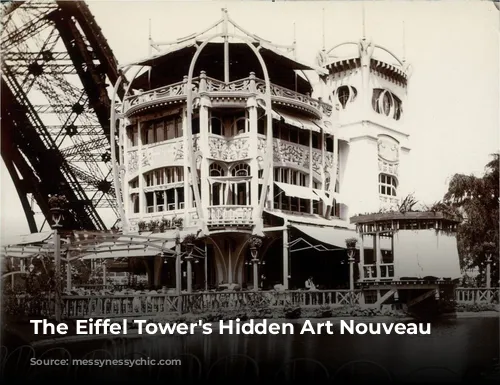
Paris’s Art Nouveau Dining Gems
The Bouillon Chartier on Boulevard Saint-Germain is a prime example of a restaurant that has defied time. Originally threatened with demolition, it was saved by the French Culture Minister André Malraux and meticulously restored, becoming a historical landmark in 1983. This historic bistro offers a taste of the past, transporting diners to the era of Art Nouveau.
(This section focuses on the Bouillon Chartier, highlighting its historical significance and its restoration.)
Another hidden gem is the Beefbar, originally created as the dining room of Hôtel Langham in the late 19th century. After being hidden for nearly 80 years, it was rediscovered during renovations in 1978 and restored to its former glory. This Belle Epoque restaurant offers a unique dining experience, allowing visitors to enjoy a meal in a stunning Art Nouveau setting.
(This section features the Beefbar, focusing on its history, rediscovery, and its transformation into a modern restaurant while preserving its Art Nouveau heritage.)
For a truly unforgettable experience, visit the Le Café de la Paix, a 111-year-old landmark where the legendary singer Edith Piaf frequented. Admire the exquisite ornaments, stained glass ceilings, and Mucha-esque murals that transport you back to the opening night in 1906.
(This section highlights the Le Café de la Paix, emphasizing its historical significance and its connection to Edith Piaf, and its impressive Art Nouveau features.)
The Bouillon Racine, opened in 1906, is another testament to the enduring legacy of Art Nouveau in Paris. Originally owned by the Chartier brothers, it was later acquired by the Sorbonne and restored to its former glory in 1993. Today, it offers a modern take on French classics, preserving its Belle Epoque charm while embracing contemporary flavors.
(This section introduces the Bouillon Racine, highlighting its history, ownership changes, and its successful restoration, focusing on its blend of classic and modern elements.)
Finally, no list of Parisian Art Nouveau gems would be complete without Maxim’s, a legendary restaurant that has been an integral part of Parisian society since 1893. The building, originally owned by the Duke of Richelieu, has seen numerous transformations, from an ice cream parlor to a carriage driver’s restaurant. Its ultimate transformation into Maxim’s et Georg’s by Maxime Gaillard and Georges Everaert catapulted it into the heart of Belle Epoque society, becoming a symbol of Parisian elegance. Today, visitors can enjoy a delightful meal and explore the Maxim’s Art Nouveau museum, showcasing a remarkable collection of 19th-century art and furniture.
(This section features Maxim’s, emphasizing its long history, transformations, and its enduring popularity as a Parisian landmark, highlighting its Art Nouveau museum.)
Whether it is a hidden bistro on a bustling Parisian street or a legendary landmark, these Art Nouveau restaurants offer a glimpse into the past, allowing visitors to experience the beauty and charm of a bygone era. The Art Nouveau movement, which once swept through Europe, lives on in these architectural treasures, captivating diners with their timeless elegance.
(This section concludes the article, summarizing the overall experience of visiting these Art Nouveau restaurants and emphasizing the enduring legacy of the Art Nouveau movement.)

